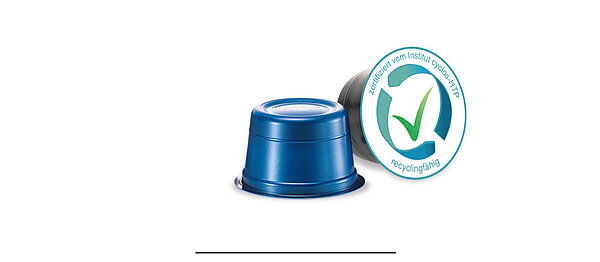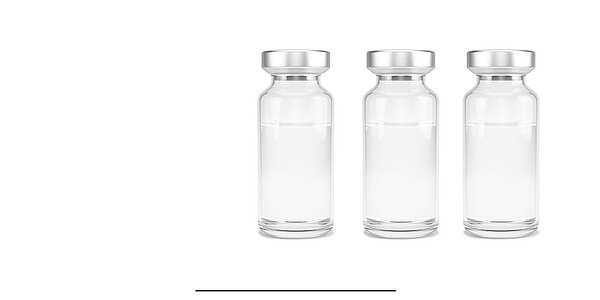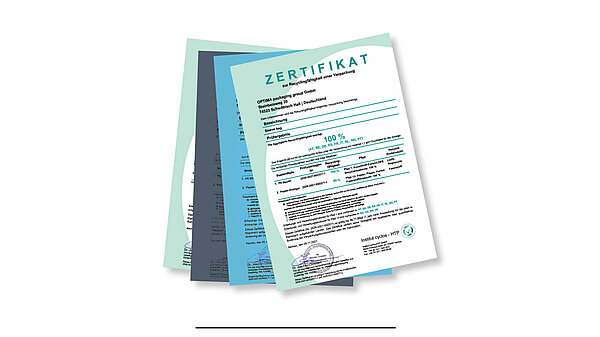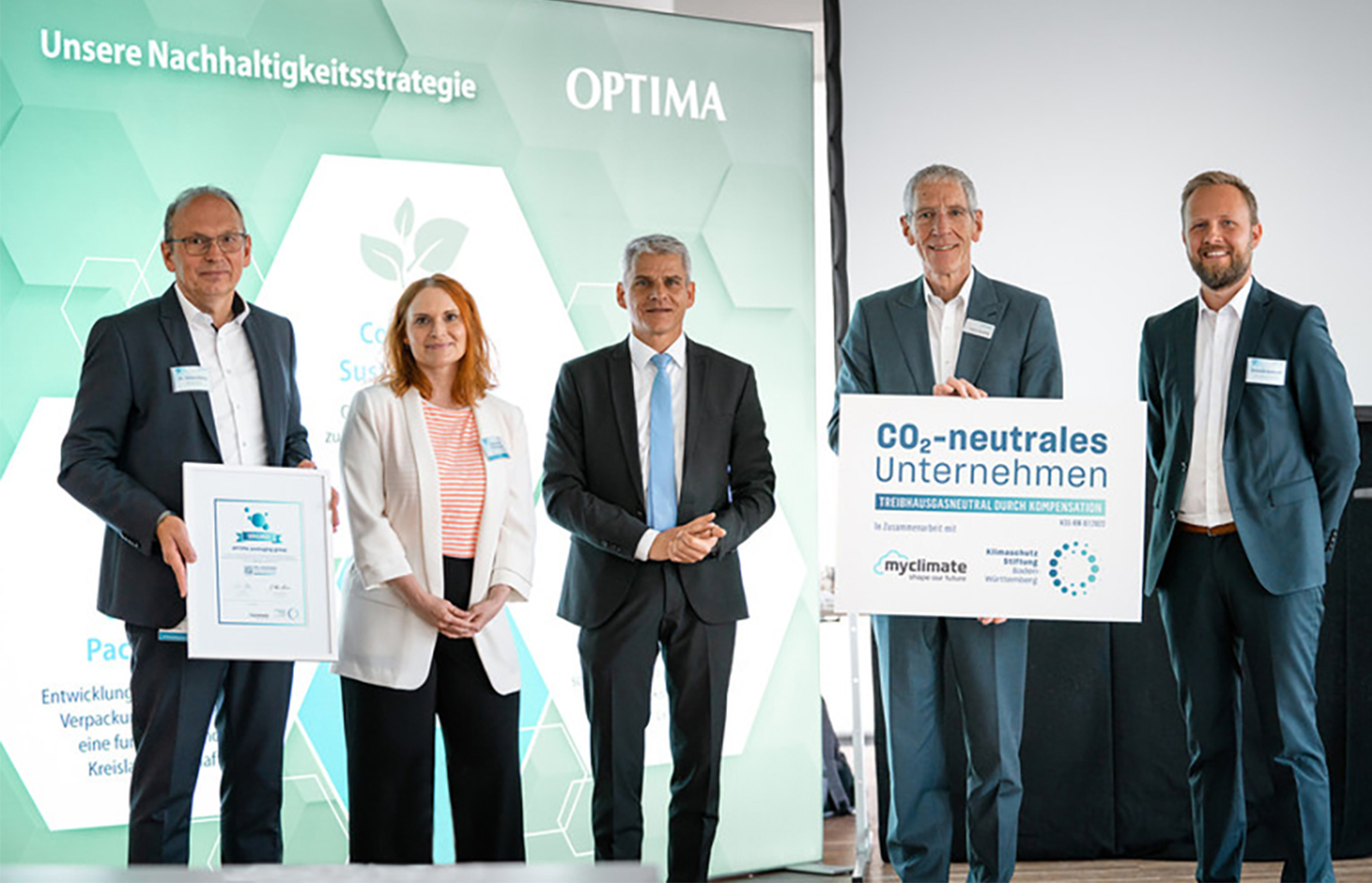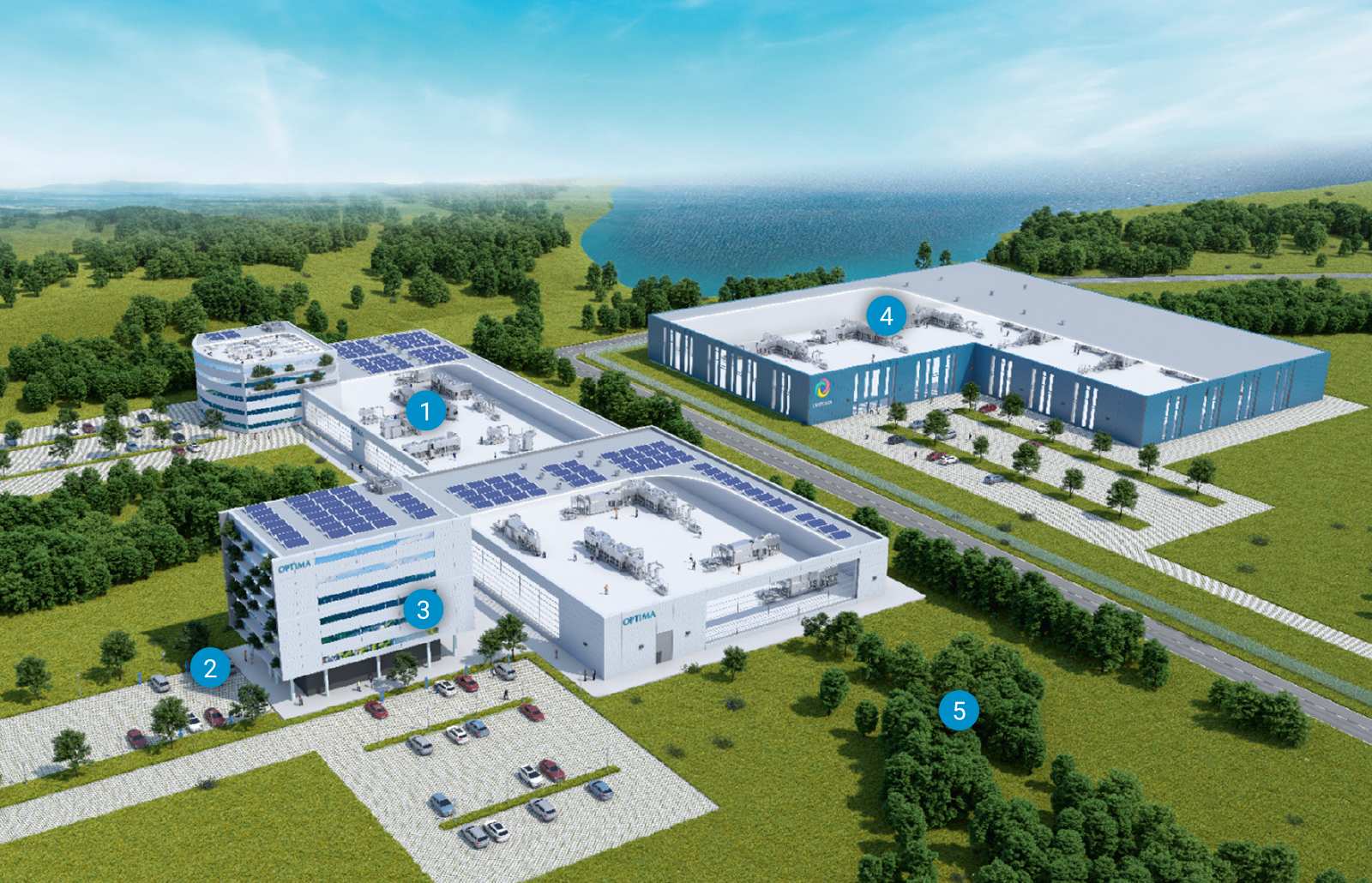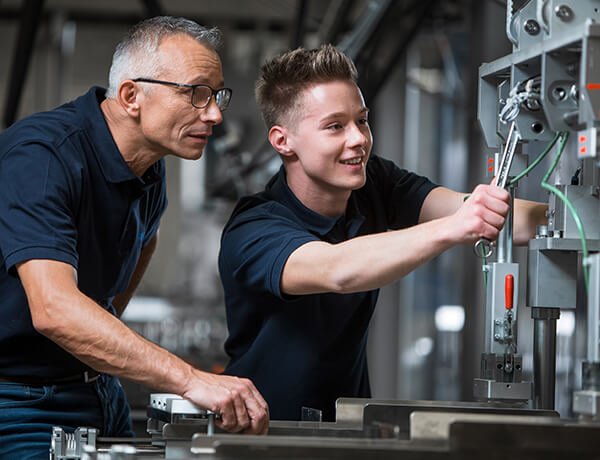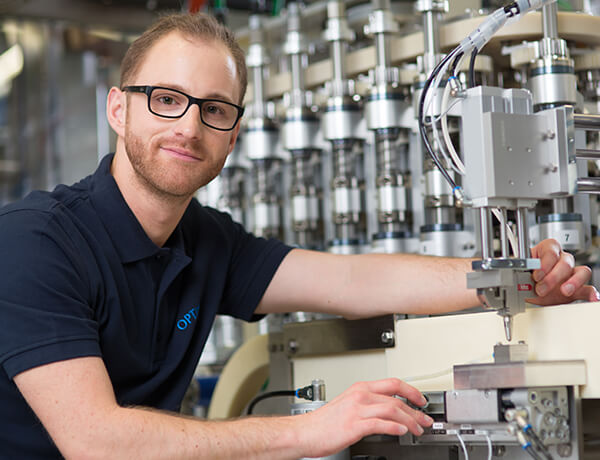Sustainability – as a mindset
Family-run, in the third generation, Optima has always focused on creating long-term solutions. A profound sense of responsibility for future generations is the drive for future endeavors. Or, as Hans Bühler says: “Our objective as a company is to safeguard the present and shape the future for our descendants, for a sustainable, safe and viable world by using resources responsibly and treat our environment well. Together with our customers, we work every day to find solutions for safe and environmental friendly products.”
As one of the world's leading companies for filling and packaging machines, how can we achieve sustainability – day after day, for all divisions?
Optima has established a sustainability team to consolidate and advance all existing and future initiatives and ideas, and to ensure that customers and partners respect this topic as well. Optima's sustainability motto is: “We care for tomorrow”. We want to excel across the board and focus on environmental issues, social topics, and corporate governance. However, true sustainable programs are not based on the conviction that we already have all the answers, but rather on questions such as:
How can packaging become more sustainable?
First, it is important to acknowledge that packaging is needed for a number of reasons. Food, for example, would spoil quickly without proper packaging. The correct packaging has to be suitable for storage and transportation. Therefore, packaging is an important contribution to feed the world's growing population and helps prevent excess food. At times, packaging can be an integral part of the product and absolutely essential. Vaccines or other important medicines come to mind. Therefore, packaging cannot and should not always be avoided.
Yet, benefits and expenses must be taken under consideration to be beneficial. All parties involved must evaluate the benefits versus the expenditures to ensure the cost-benefit-ratio to make sense.
The key is to develop long-term, sustainable solutions rather than realizing short-term solutions that shift the problem along the value chain.
Here are a few constructive solutions:
What is the contribution of Optima systems and machine solutions towards sustainability?
The efficient use of materials and cutting-edge technology reduce the CO2 footprint in machine manufacturing and production.
What can Optima do within the company?
This starts with electricity in our buildings in Schwäbisch Hall, which is generated from renewable energy sources. We rely on existing geothermal energy or sustainably generated district heating for our heating systems. We also place great importance on waste prevention, waste separation and therefore have advanced waste separation concepts. Our computer simulations save our customers time, as well as plenty of test material. We are currently in the process of converting our vehicle fleet to hybrid models and electric mobility.
Is it transparent?
Openness and transparency are among the corporate principles at Optima. Sustainability is very important to us and we don’t just want to be all talk – we want to be actively involved. The four certifications we received confirm that sustainability is not just a theoretical issue for us.
Does this indicate that everything is achieved?
Optima could proudly brag about its successes regarding its environmental achievements in terms of sustainability. However, the company is also aware that this is just the beginning. Now things are really taking off. Right on time for its 100th anniversary, Optima is adopting an environmental and climate strategy, expanding the long-standing, successful CO2 reduction measures it already has in place and from 2022, it will be net carbon neutral. Optima customers, too, will soon be able to purchase net carbon-neutral machines. Optima is taking a holistic approach on environmental issues and climate change. Therefore, we introduced the environmental management system in compliance with DIN ISO 14001 in spring 2022. Currently, climate change is the most widely considered issue but other environmental issues like water consumption and biodiversity also need to be addressed.
Sustainability, the environment and the climate have to be considered together!
In addition to its comprehensive measures and initiatives relating to sustainability, Optima is pursuing an ambitious environmental and climate strategy – with measurable success. Optima’s German sites have already been climateneutral since 2022, just on time for its 100th year anniversary. The same will soon be true for systems and machines made by Optima.
Certified climate neutral
The best way to protect the climate is to reduce greenhouse gases or, if possible, avoid them altogether. Optima has already made great progress: Since 2009, it has reduced its carbon footprint by around 41%. A variety of measures – including consistent use of green electricity, which Optima has used for more than 10 years – have helped to achieve this objective. The next milestone is to further reduce emissions by 25% by 2030. This will be achieved primarily by improving energy and resource efficiency at the sites, as well as by expanding sustainable mobility.
Optima offsets any greenhouse gases that cannot yet be completely avoided by investing in certified climate protection projects of the highest quality, known as the gold standard. Therefore, it works closely with the Klimaschutzstiftung Baden-Württemberg (Baden-Württemberg Climate Protection Foundation).
Prevention and compensation: How much – or rather how little – the climate is ultimately affected by these measurements is checked by the TÜV Süd, which verifies the proper detection of greenhouse gases. It applies the GHG Protocol (Greenhouse Gas Protocol), an internationally recognized quantitative model for accounting of greenhouse gas emissions.
However, avoiding and offsetting within the company is only part of Optima’s environmental and climate strategy.
“I hope that many companies in Baden-Württemberg follow Optima’s example and increase their sustainability and climate protection programs.”
Dr. Patrick Rapp, State Secretary in the Ministry of Economics, Labor and Tourism in Baden-Württemberg and member of the Climate Protection Foundation’s Board of Truste
1. Developing sustainable machine and packaging solutions
- Reducing the Product Carbon Footprint (PCF) in the manufacturing phase
- Developing sustainable packaging solutions for a functioning recycling economy
2. Sustainable mobility
- Fleet of vehicles with alternative drives
- E-charging infrastructure
- Parking areas with grass lattice pavement
3. Energy-efficient buildings
- Using renewably generated district and geothermal heat since 2009
- Green electricity from certified hydropower since 2009
- Photovoltaic systems
- LED lighting
- Ventilation with heat recovery systems
- Presence-controlled lighting in the workplace
4. Energy-efficient machines for our customers
- Reducing the Product Carbon Footprint (PCF) in the utilization phase
5. Holistic environmental approach
- Reducing water consumption
- Waste prevention
- Environmental management system in accordance with DIN EN ISO 14001
- Promoting biodiversity through natural meadows
Climate-neutral systems and machines
Starting in 2023, Optima will offer machines and systems that are net-climate neutral, based on a compensated, project-specific climate footprint. This makes Optima one of the first suppliers in the industry to deliver climate neutral machinery. To provide customers with climate neutral equipment, the product carbon footprint (PCF) of the project must be determined.
“In the future, greenhouse gas emissions for individual machine projects will be an additional criterion in the customer’s purchase decision. We will be able to identify which measures – for example, in design and procurement – we can use to further reduce our product-related climate footprint. Therefore, we have a direct and positive impact on our customers’ carbon footprint,” says Dominik Bröllochs, Group Sustainability Manager.
Soon, Optima systems and machinery will be providing customers with measurable support to achieve not only their productivity goals, but also their sustainability goals.
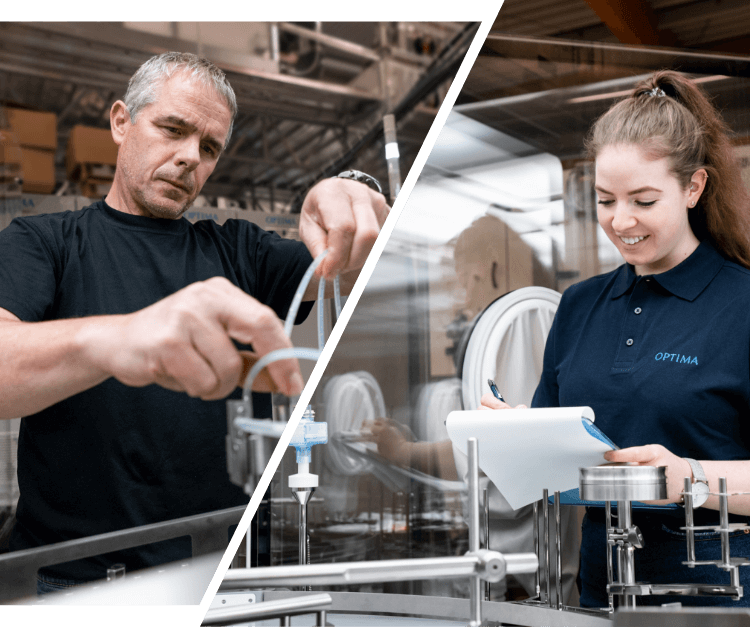
Werden Sie Teil unserer Erfolgsgeschichte!
Ein Unternehmen ist immer nur so gut wie seine Mitarbeitenden. Deshalb suchen wir bei Optima ständig nach engagierten Fachkräften (m/w/d), die gemeinsam mit uns die nächsten „100 Years of Future“ anpacken wollen.


